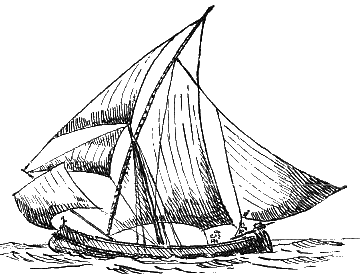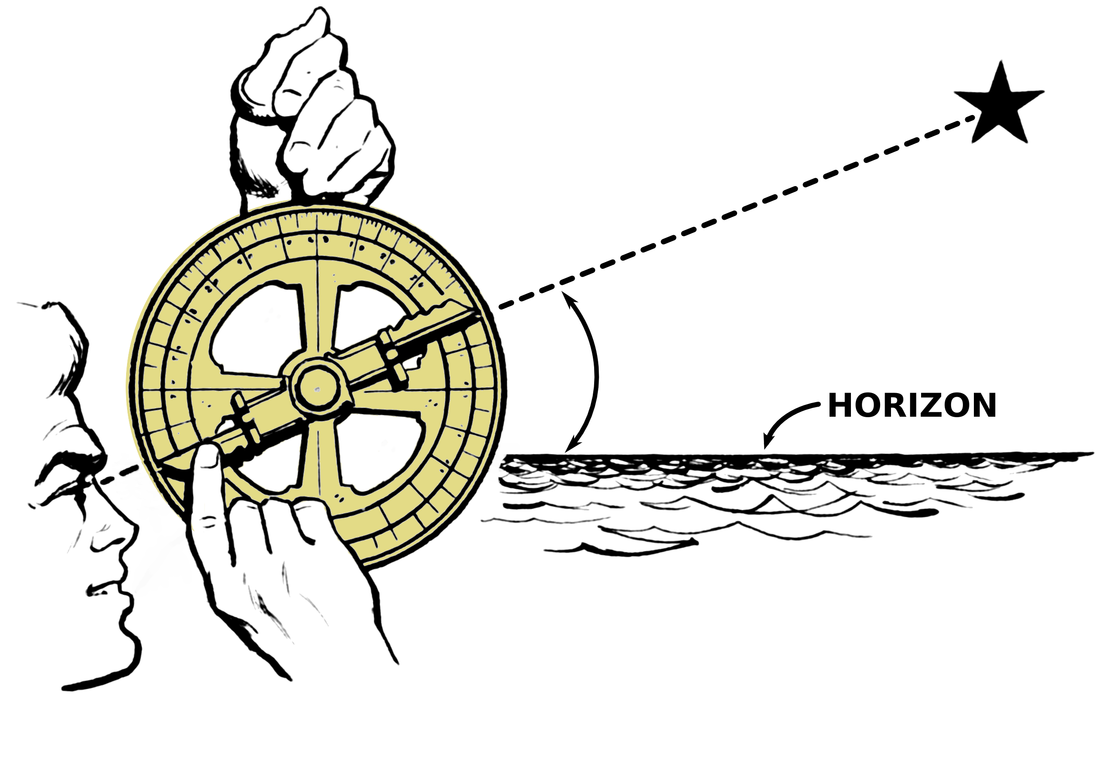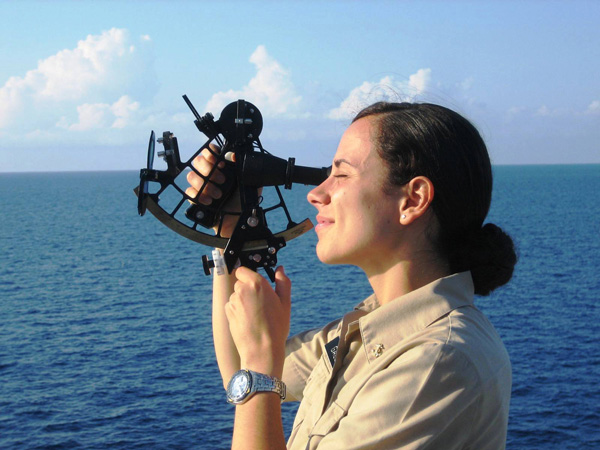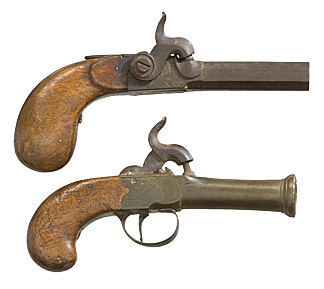The Basic Gist
Yazmin Gooren
4.1.1: Identify then explain the impact innovative tools had on transoceanic travel & trade.
Who, When, and Where?
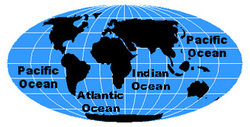
The main oceans involved in the transoceanic travel and trade of the Age of Exploration were the Pacific, Atlantic, and Indian oceans. The cultural and economic exchanges which occurred as a result of these were part of pivotal trade networks, and impacted history greatly.
(Due to the many factors involved in this matter, I chose to split up the segment of this topic’s Basic Gist into separate sections, rather than one whole paragraph.)
The Portuguese, Dutch, Spanish, and British (i. e. Europeans)
1400s until the 1700s, roughly. Often encapsulated by the following nicknames: “Age of Exploration,” “Age of Discovery,” and “Age of Great Navigations.”
Atlantic, Pacific, and Indian Oceans;
Americas, China, India, Europe.
- Who?
The Portuguese, Dutch, Spanish, and British (i. e. Europeans)
- When?
1400s until the 1700s, roughly. Often encapsulated by the following nicknames: “Age of Exploration,” “Age of Discovery,” and “Age of Great Navigations.”
- Where?
Atlantic, Pacific, and Indian Oceans;
Americas, China, India, Europe.
What and How?
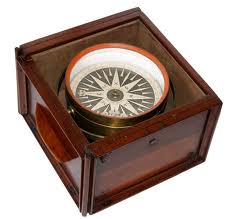
The dry compass was invented by the Chinese, but perfected by the Europeans, and eventually served as one of the core technology-related advancements they had in transoceanic travel and trade.
What?
Using technology so as to participate in global trade, travel and colonization in the most efficient manner possible; Innovative tools as pertaining to ships, navigation, and weaponry allowed for tremendous improvements in both trade and travel, since all of these allowed for larger amounts of cargo to be transported in a faster, safer, and much more efficient manner with a level of sophistication and comfort previously unknown ease unknown to both travelers and merchants of this Era's most prominent countries, thus leading to a more effective trading system, seeing as Europeans were no longer limited to traveling by land, or only small portions of the sea.
Types of Technology:
Ship-related:
Navigational:
Weapons:
How?
Using technology so as to participate in global trade, travel and colonization in the most efficient manner possible; Innovative tools as pertaining to ships, navigation, and weaponry allowed for tremendous improvements in both trade and travel, since all of these allowed for larger amounts of cargo to be transported in a faster, safer, and much more efficient manner with a level of sophistication and comfort previously unknown ease unknown to both travelers and merchants of this Era's most prominent countries, thus leading to a more effective trading system, seeing as Europeans were no longer limited to traveling by land, or only small portions of the sea.
Types of Technology:
Ship-related:
- Multi-masted ships with lateen sails
- Sternpost-mounted rudder
- Skeleton-first hull construction
- The advantage of the lateen sail is that it rises better to the wind, and is therefore easier to maneuver, making the ship sail faster and more efficiently processes the wind. Meanwhile, the sternpost-mounted rudder made boats easier to control by facilitating the manner in which the boat changed course, making travel easier. The emergence of the "skeleton-first" boat construction entailed the foundation of the boat being built first and with more supporting components, making the boat stronger and more effective, and thereby more suitable for long-distance travel.
Navigational:
- Dry compass
- Cross-staff
- Astrolabe
- Sextant
- Improved map-making
- The compass was used to determine the course a ship was on, and helped sailors establish if they were going in the right direction, saving the time mistakes would cost the journey. The cross-staff was used to determine latitudinal location and was, much like, the compass, convenient in that it made travel (and therefore trade) less costly with regard to time. The astrolabe and sextant served a similar purpose, but was on occasion a bit more accurate than the cross-staff, but when all three (dry compass, cross-staff, astrolabe or sextant) were used together, a sailor could be aware of his nearly exact location at sea. was first invented in Han China, but eventually made its way to Europe where it was improved upon to become the dry compass. Due to all this facilitated travel, map-making was also improved, a fact that made awareness of the world at large easier to reach, and the possibility of travel easier to access. It is also important to note that even though some of these inventions had existed previously and outside of Europe's reach, it was their simultaneous utilization and continued innovation and improvement that gave Europeans the advantage during this Age of Exploration.
Weapons:
- Guns
- Metal swords and armor
- Seeing as most natives in the Europeans' destinations only had extremely primitive stone or wood weapons, the fact that Europeans had adopted Chinese gunpowder and metal-based weaponry gave them a great advantage in that it provided the opportunity to forcefully capture, enslave, kill, or otherwise control the natives they encountered, allowing them to conquer any foreign lands and forcing even those initially unwilling into trade. (An advantage to be had after the travelling and trading has already occurred, but still an important tool to note.)
How?
- Generally speaking, it were the European advancements in ship-building, navigational tools, and military technology that allowed them to easier travel and trade. They understood the importance of continuous innovation, and were able to control major sea trading routes as a result. For example, while the Americas remained largely stagnant in their ship-building capabilities and were consequently limited to canoes and other, more primitive boat-structures, the Europeans were changing not only the manner in which they constructed their boats (skeleton-first, rather than without a significant foundation) but also the appendages of these boats (square-rigged sails to lateen sails) and the tools to be found on these (compasses, astrolabes, compasses, etc). Had these Europeans not done so, they would not have been able to interact with other areas in the way that they did, and no significant cultural nor economic gains would have been made.
Why is this important?
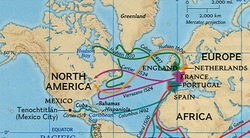
This map details the Triangular Trade Network, or Columbian Exchange, one of the many interactions between Europe and the Americas brought about by such technology as lateen sails, dry compasses, and astrolabes. Travel was now safer, faster, and more efficient than ever.
All of this is important because:
- Sailors would not have known where to go if it were not for the aforementioned tools. This would have been bad, seeing as travel, trade, and the accompanying colonization and cultural exchanges would otherwise not have occurred, leaving our modern world permanently changed, seeing as many current nations still trace the majority of their culture and heritage back to those counties which once colonized or traded heavily with them.
- These naval and military technologies also allowed Europeans to spread their respective cultures, languages, religions, political structures, artistic movements, goods, and weapons. These were then often absorbed and improved upon by whomever these influenced most directly.
- Through travel to unknown lands, global trade expanded, and so did the economies of the nations involved, seeing as people could now not only choose what they wanted to trade, but where and with whom they wanted to trade. This also led to a great improvement pertaining to the provision of an alternative Asian trade route.
- Plus, these technological innovations allowed continents like Europe and the Americas to trade crops such as maize, sugar, potatoes, and tomatoes, thus increasing the food variety (and standard of living), food base, and economic wealth of both continents. This was important because the introduction of new goods such as these in the marketplaces of these respective countries brought about a new economy systems, such as, for example, joint-stock companies, which emerged during this time and led to both territorial and economic increases in wealth for its European "mothercountries."
- However, societal implications also demonstrated itself as a result of increasingly facilitated trade and travel. The colonization of large areas, and the enslavement or otherwise terrible manner in which many of the colonized were treated, is one of these advancements' most negative consequences, seeing as racial tensions and twisted relationships remain a reality until this day.
- Christianity spread from European countries to conquered natives and their territories, to forge both permanent cultural and economic ties.
- Usage of gunpowder spread from Asia to Europe, allowing for European conquest of the Americas.
|
"They journey from west to east, from east to west, partly on land, partly by sea. They take ship in the land of the Franks, on the Western Sea, and steer for Farama (Pelusium). There they load their goods on the backs of camels, and go by land to Kolzum (Suez) in five days' journey over a distance of twenty-five parasangs. They embark in the East Sea (Red Sea) and sail from Kolzum to El-Jar (port of Medina) and Jeddah (port of Mecca); then they go to Sind, India, and China. On their return they carry back musk, aloes, camphor, cinnamon, and other products of the Eastern countries to Kolzum, and bring them to Farama, where they again embark on the Western Sea. Some make sail for Constantinople to sell their goods to the Romans; others go to the palace of the king of the Franks to place their goods."
;A primary document describing the laborious nature of having to travel only "partly by sea" and also "partly on land" having to use "camels" while only "some make sail" rather than all or at least the majority of trade being efficiently conducted by Sea, as in the Age of Exploration. |
"The 27th of November the Hollanders proclaimed war against all the English at the Moluccas, Banda, and Amboyna, threatening to make one and all prize and to put them to the edge of the sword; which proclamation of theirs they fixed upon the doors of their lodgings at Bantam, challenging all to be theirs as their proper inheritance.
As a result of English disappointments with dislodging the Dutch from the Spice Islands, they turned instead to India. In 1614 Sir Thomas Roe was instructed by James I to visit the court of Jahangir, the Mongol emperor of Hindustan. Sir Thomas was to arrange a commercial treaty and to secure for the East India Company sites for commercial agencies, --- "factories" as they were called." ;A primary document describing the manner in which European nations competed for the most advantageous trading, something which would not have been possible were it not for the heavily facilitated exchange of commercial goods via sea. |
Works Cited:
Armstrong, Monty, David Daniel, Abby Kanarek, and Alexandra Freer. Cracking the AP: World History Exam 2013. 2013 ed. New York: Random House, 2012. 134-138. Print.
"Astrolabe." Wikipedia. Wikimedia Foundation, 27 Jan. 2013. Web. 06 Feb. 2013.Princeton Review.
CPT ppts
"Enlightenment, The Age of." History World Org. N.p., n.d. Web. 07 Feb. 2013.
James Harvey Robinson, ed., Readings in European History, 2 Vols. (Boston: Ginn and Co., 1904-1906), Vol. II: From the opening of the Protestant Revolt to the Present Day, pp. 333-335.
Joseph Jacobs, Jewish Contributions to Civilization, (Philadelphia: Jewish Publication Society of America, 1919), pp. 194-196, reprinted in Roy C. Cave & Herbert H. Coulson, A Source Book for Medieval Economic History, (Milwaukee: The Bruce Publishing Co., 1936; reprint ed., New York: Biblo & Tannen, 1965), pp. 151-152.
"Lateen." Wikipedia. Wikimedia Foundation, 27 Jan. 2013. Web. 06 Feb. 2013.
Strayer, Robert W. Ways of the World: A Global History with Sources. Boston, MA: Bedford/St. Martins, 2011. N. pag. Print.
*All images are directly linked to their respective sources.
"Astrolabe." Wikipedia. Wikimedia Foundation, 27 Jan. 2013. Web. 06 Feb. 2013.Princeton Review.
CPT ppts
"Enlightenment, The Age of." History World Org. N.p., n.d. Web. 07 Feb. 2013.
James Harvey Robinson, ed., Readings in European History, 2 Vols. (Boston: Ginn and Co., 1904-1906), Vol. II: From the opening of the Protestant Revolt to the Present Day, pp. 333-335.
Joseph Jacobs, Jewish Contributions to Civilization, (Philadelphia: Jewish Publication Society of America, 1919), pp. 194-196, reprinted in Roy C. Cave & Herbert H. Coulson, A Source Book for Medieval Economic History, (Milwaukee: The Bruce Publishing Co., 1936; reprint ed., New York: Biblo & Tannen, 1965), pp. 151-152.
"Lateen." Wikipedia. Wikimedia Foundation, 27 Jan. 2013. Web. 06 Feb. 2013.
Strayer, Robert W. Ways of the World: A Global History with Sources. Boston, MA: Bedford/St. Martins, 2011. N. pag. Print.
*All images are directly linked to their respective sources.
